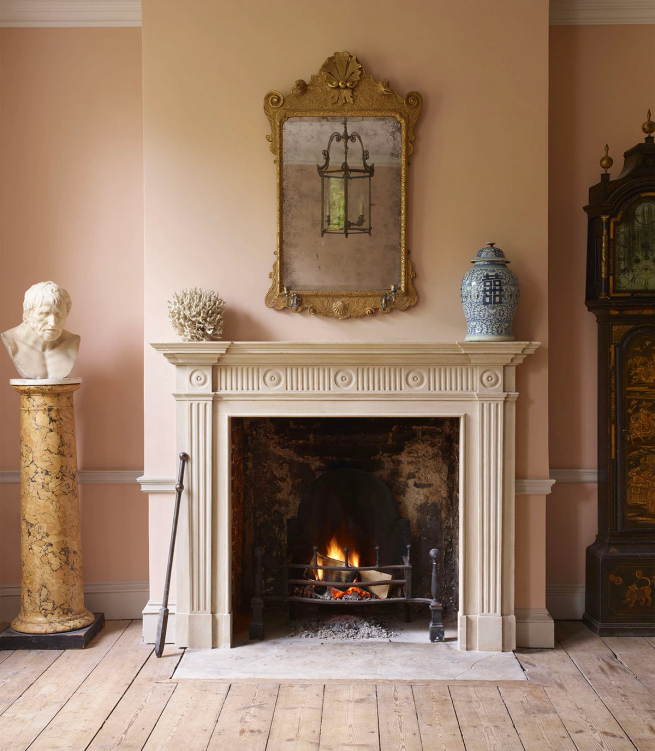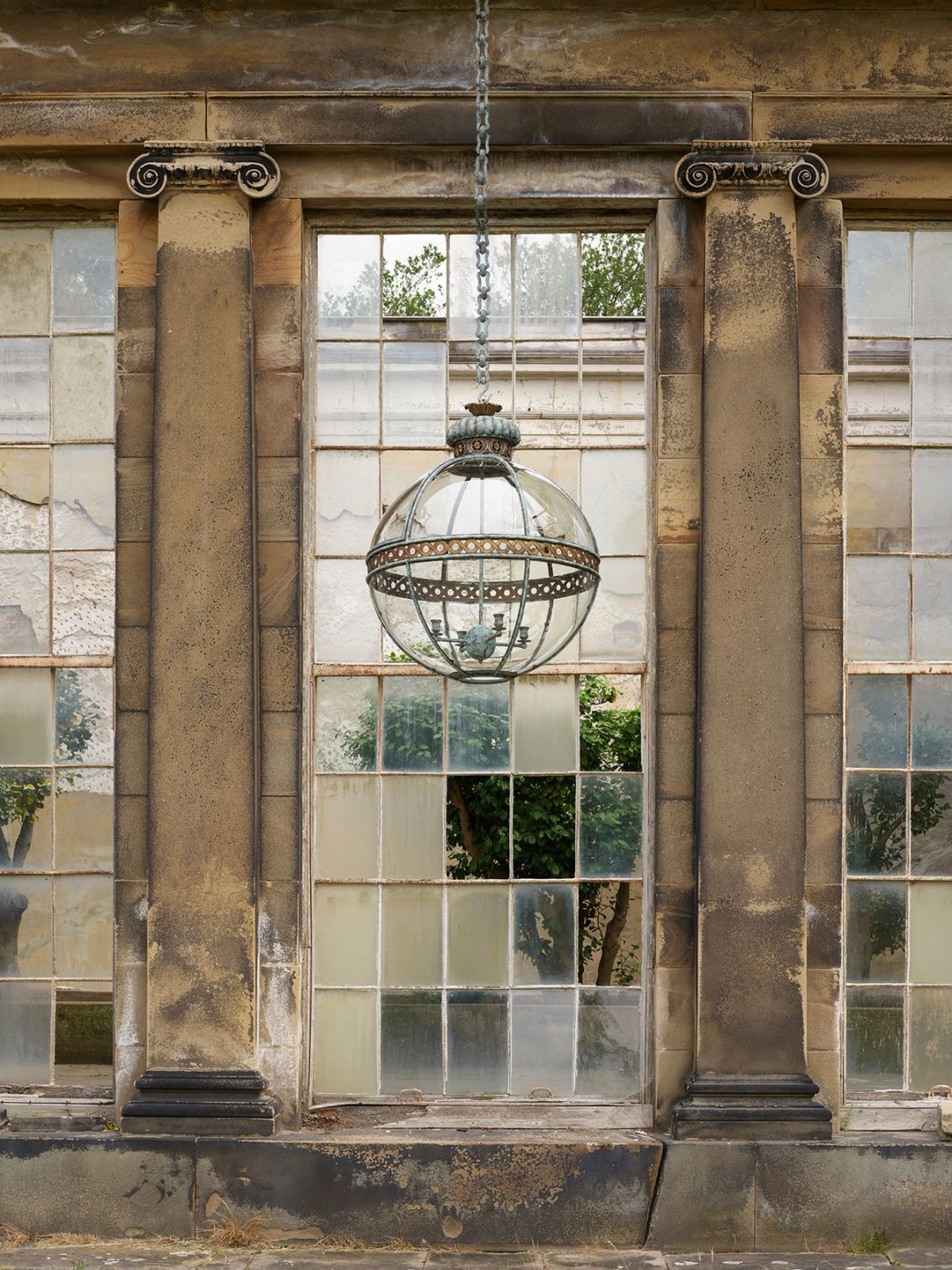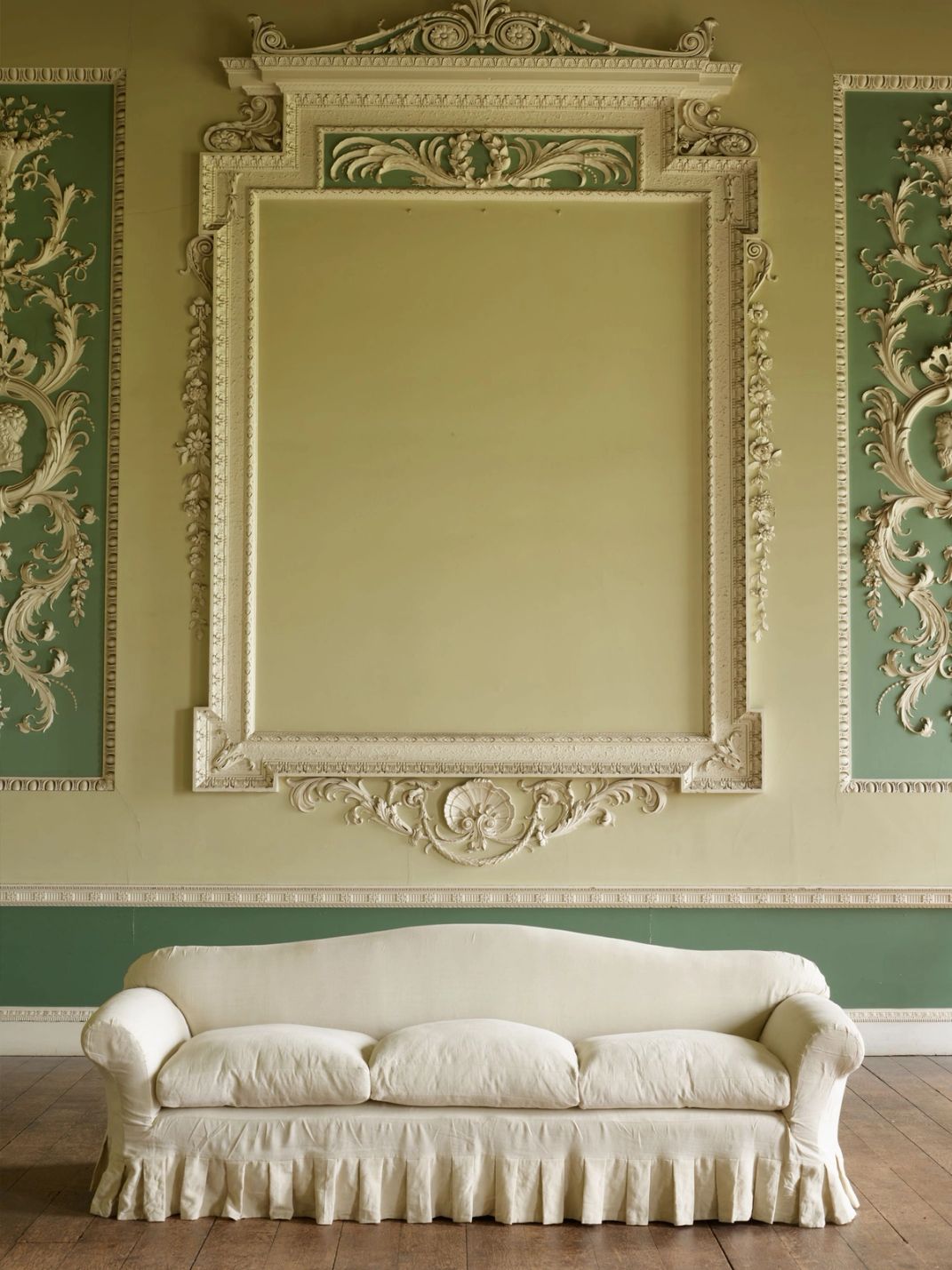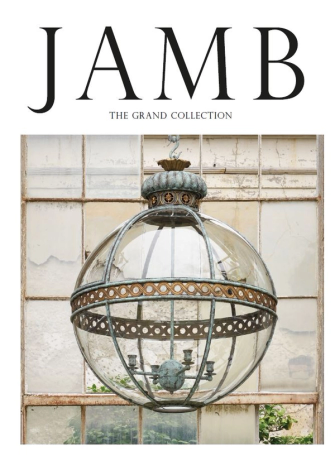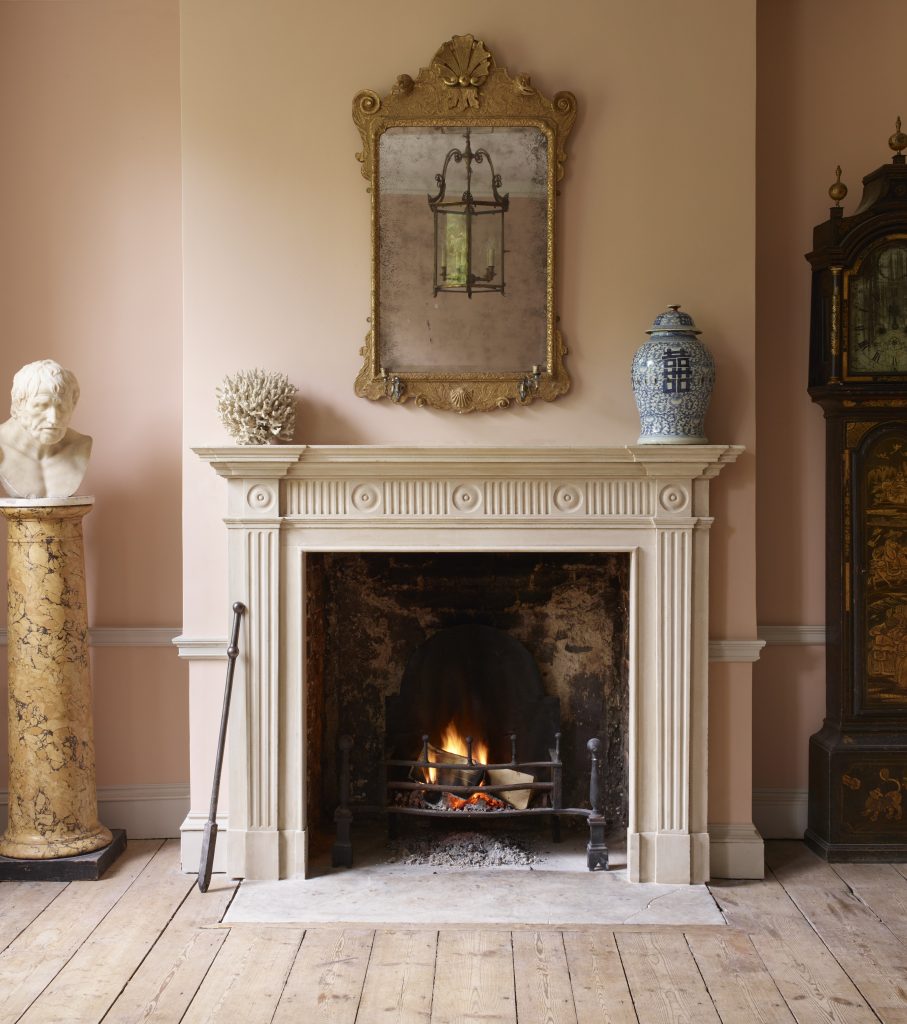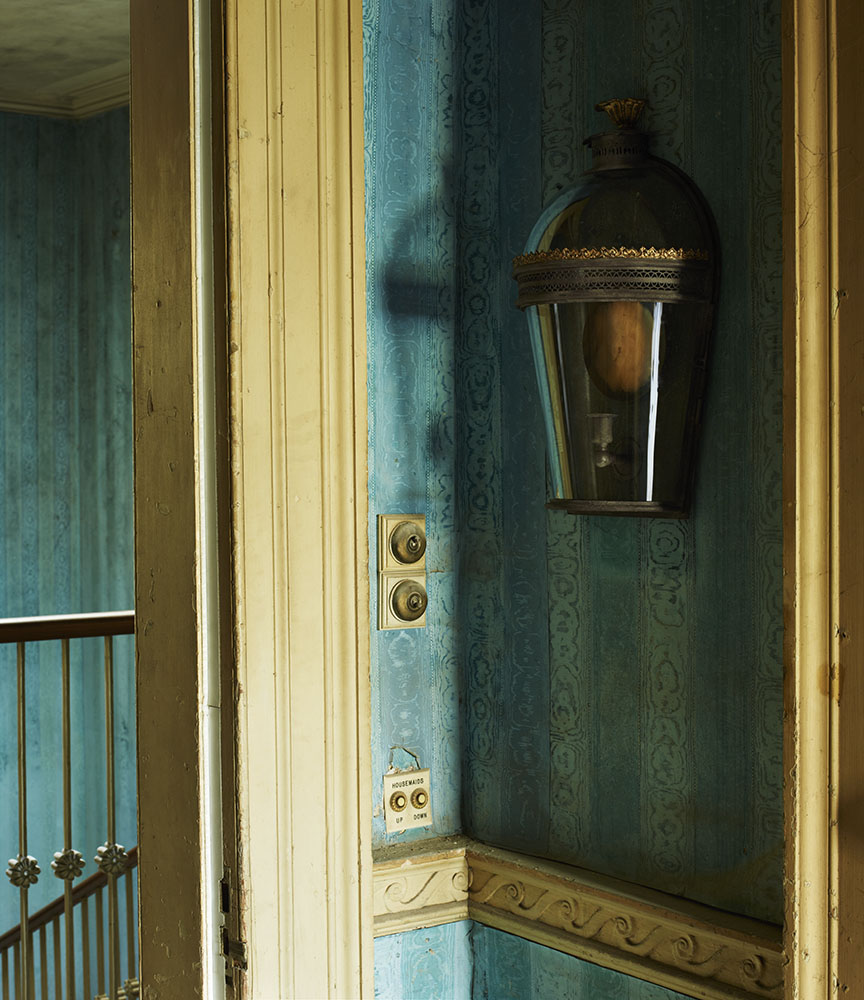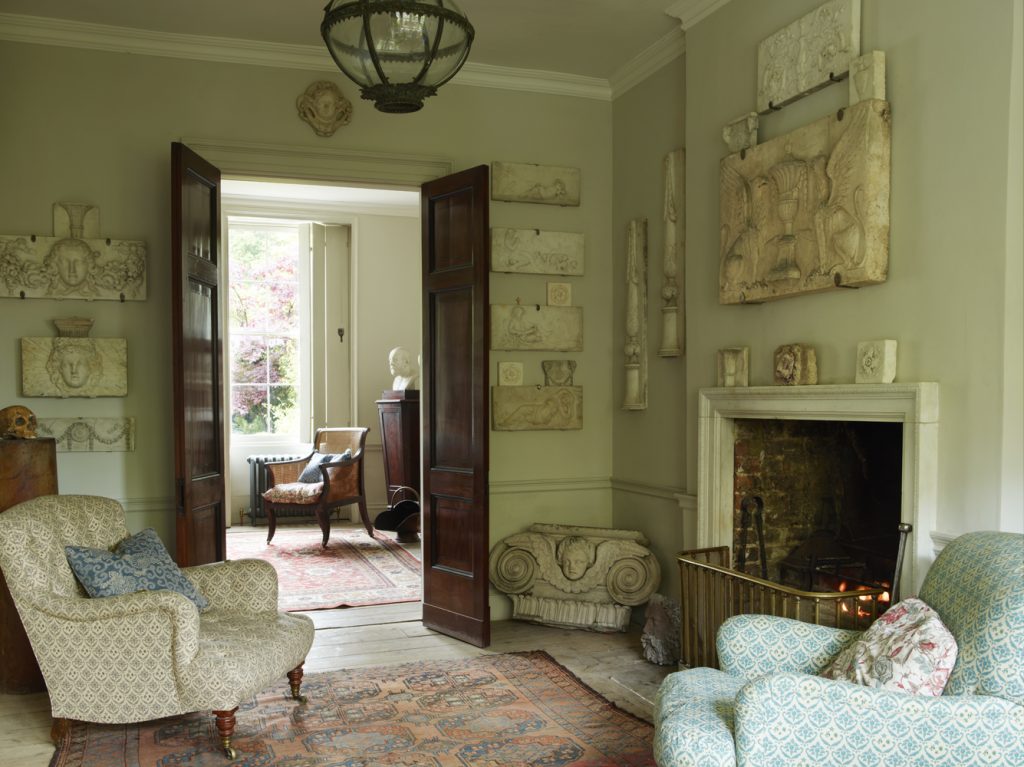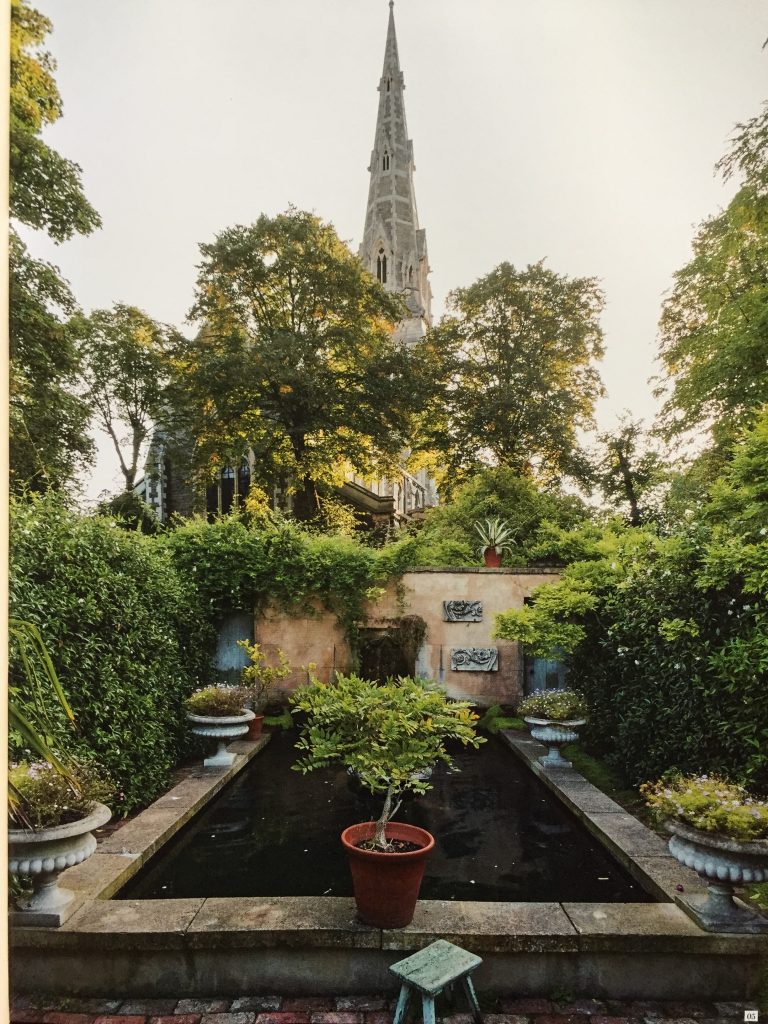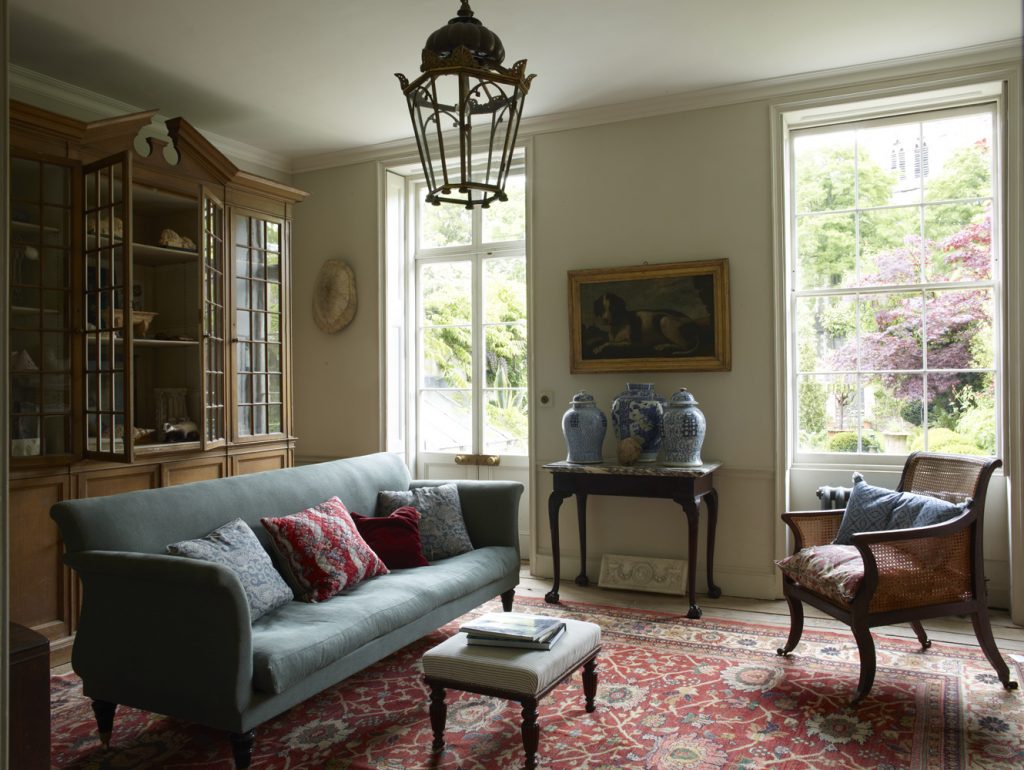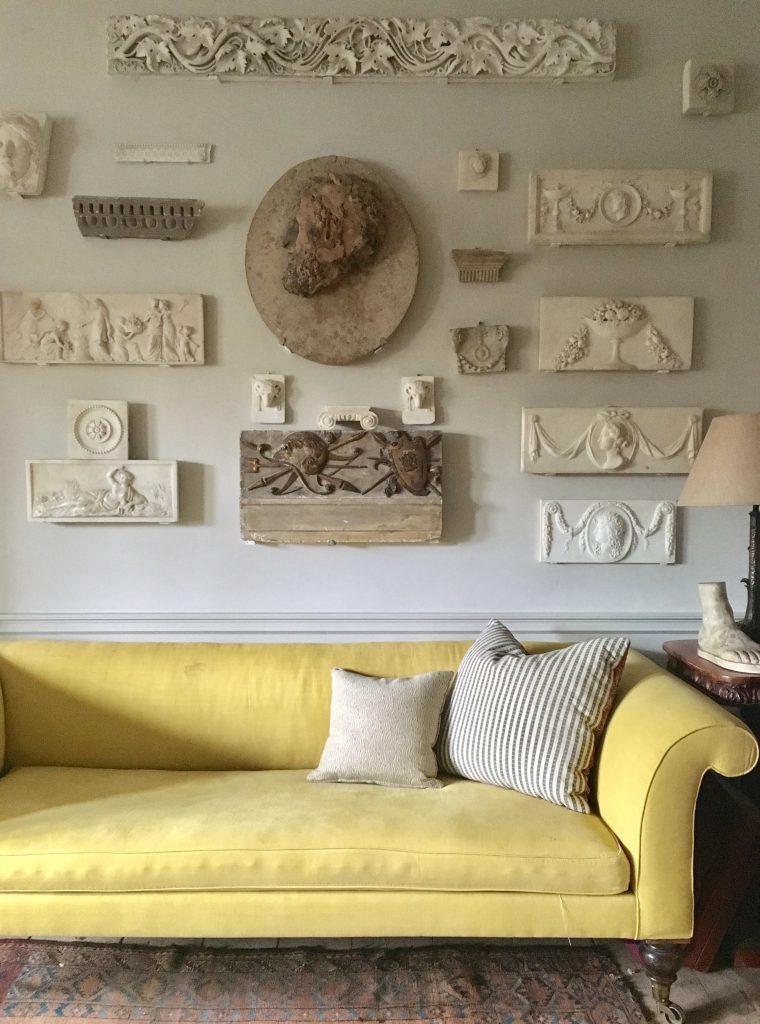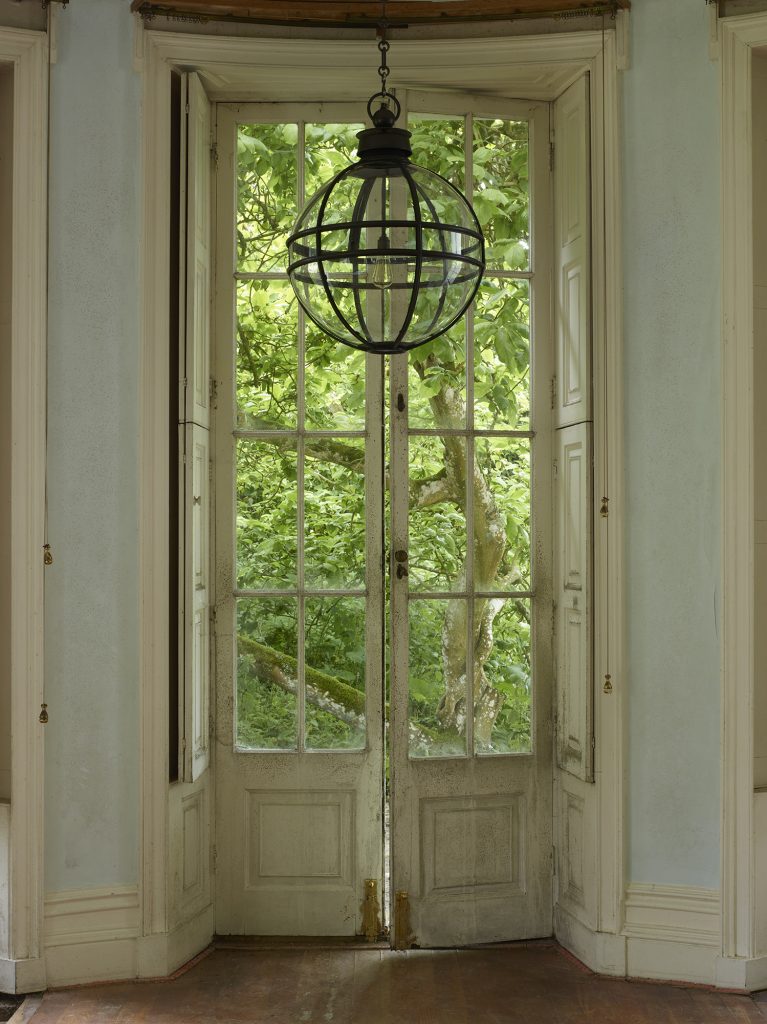During the recent London Design Festival, Charlotte and I &A did a Q&A with Carole Annett, the editor of Country and Town House on Country house style – I thought we could share some of the conversation with you.
“So firstly how would you define Country house style?”
Will:
“I think it is one of those terms that is widely banded around. On one hand it is quite an individual thing. There is a tendency for a lot of people to think of it being Jacobean: interiors with dark English furniture, a dark environment, but infact certainly to me what English country house is, is generations of layered purchasing from very wealthy families, putting together collections over many, many years. It is that sense of an evolved interior which is to me the quintessential English country space. “
“It is also the hierarchy of a building. So if you think of the below -stairs areas of country houses with the servants quarters, that are far more parred back, but still with a strictness of the moulding, Then moving up into other rooms which are more grand, more layered- the bedrooms, textiles, the workings of it all and then further up into the attic which returns more to a language of the basement. Ironically it is the language of the basement and the servants quarters which I think work better in todays context than perhaps more of the grandiose areas.”
Carole:
“And it’s the interior designers and architects who come to you for that look. How did it start with you, was it fireplaces initially?”
Will:
“I started very, very young. Literally at ten years old. I don’t know why but I had a compulsion and an obsession with English country houses and at first it was more the external, architectural element I was fascinated by. Then age eight, my best friend’s father, had an incredible influence on me. He is an extraordinary antiques dealer Warner Dailey. He was the first person who gave me a sense of the possibility that it didn’t have to be strict and academic or a pastime, but could be a way of life where one could actually make a living. He used to encourage us to sell. I got arrested at the age of ten for being under age in charge of a market stall. The rest is history!
Carole:
“Charlotte, bearing in mind we are talking grand country houses, a lot of your clients are based in London and in smaller spaces, so how do you help your clients with those environments?”
Charlotte:
“In everything we do, we are fastidious about offering a bespoke service so we re- draw most of the fireplaces, if we need to reduce them in scale. A lot of our antique mantels work incredibly well in a contemporary interior, so if you are not being too academic about the date, it doesn’t matter, it transcends. The classic bolection that we make now in our London warehouse, in the most beautiful blocks of Breche Violette and other fine marbles, work in any setting, however big or small. It doesn’t have to be large scale.”
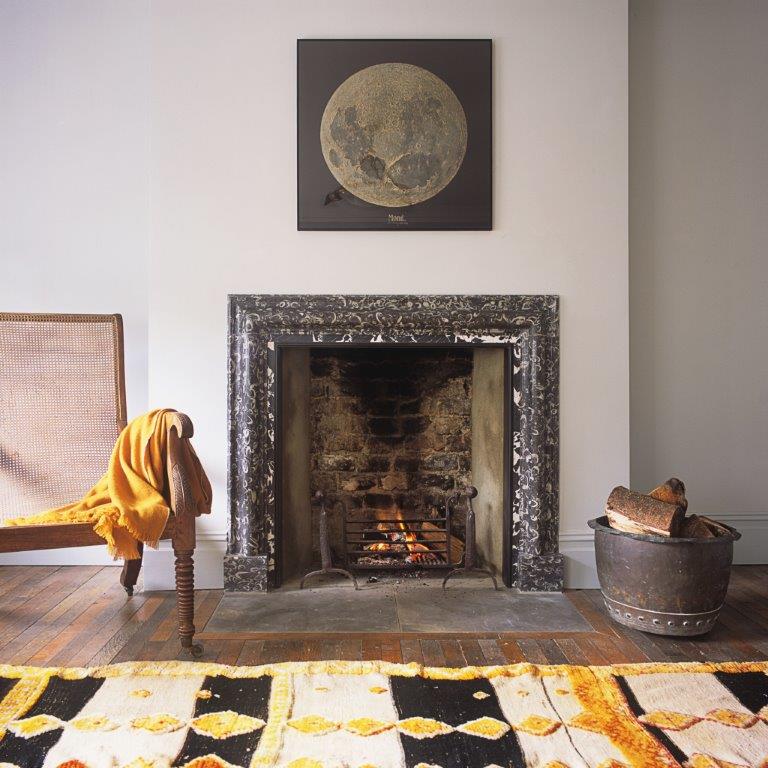
A bespoke Bolection in Peacocks eye marble which we installed into our Hanbury street, London townhouse.
Will:
“It’s also amazing that something like a bolection that originates from Italy, late 15th, early I6th century, which is basically just a moulding around the aperture of the fire, looks incredibly modern, even today. It is extraordinary and again how classic antique materials installed into modern interiors work incredibly well.”
Carole:
“How is the business divided between the antiques and the reproduction side? What is the balance between what people are buying?
Will:
“It’s probably about 50/50 now, definitely with antique chimneypieces and furniture. There is no doubt! Let it be said to everyone here! There is a renaissance in English furniture. (Which is a good and bad thing, because you don’t want price inflation – finding things is very hard.) But there is significantly more interest now in English furniture than the last ten years.
Charlotte:
“Yes! We have just moved into our new warehouse, which we didn’t think we could possibly fill, but it is already filled to the gunnels! If people have the budget and the scale then the antiques are the first stop but they also serve as the information for the next collection of the reproduction piece. We are constantly drawing on the antiques for inspiration.”
Carole:
“And where do you source from? Do you go on the most fantastic shopping trips?!”
Will:
“I have one recipe. I will not buy something I haven’t seen. The thing with the internet now is you can shop 24/7 – there is no excuse for someone not to be looking and constantly searching. So we work a lot with people around the globe but I will only buy something if someone or myself has vetted it.”
Carole
“Is there a particular country house that really inspired you?”
Will:
“When I was a child with slightly grandiose ideas, I used to drag my parents to Ragley Hall in Warwickshire, a very large over scale Palladian house. I remember the feeling of absolute excitement on the way there, then met with a complete sensory overload when I arrived, not knowing what do to, because it was so exciting – followed by a deep malaise , ‘I’m never going to own one of these!’ It was catastrophic! Then I became a bit more down to earth. There’s a house many of you may know in Blackheath: Rangers House, a Queen Anne mansion with two 18th Century wings which was again absolutely intoxicating excitement. Luckily now, I’ve managed to come even more down to earth and my excitement is far more vernacular. For me it is the things that are untouched. Sleepy environments, sleepy interiors, beautiful stone floors, surfaces, wonky walls and stairs, that’s the thing that gets me excited now. Of course it’s magnificent to go to places with scale, and the excitement in owning something that costs hundreds of thousands of pounds is enormous and we work our entire careers for that point, but actually sometimes it’s the thing that cost £25 that is more exciting and equally as charming.”
Carole:
“So Charlotte does this mean you practice what you preach at home?
Charlotte:
“Yes we do. We have many of our lighting designs and the original antique mantels from some of our reproduction fireplace designs.”
Charlotte:
“It has the roots of what we have here in the showroom but sometimes the Barbie camper van really ruins the overall look! When we moved in and I was heavily pregnant with Eliza, the first thing Will did was build a pond right at the end of the garden which is just what we needed before we even started renovations to the house!”
Will:
“Yes! Six foot deep – and then I ran out of money… Charlotte said to me, what exactly don’t you understand about having a baby? I basically constructed a death trap, and then I had to construct a wall across it in where I had to find the original 18th century authenticating bricks and then it took me a further nine months to find the exact gate.”
Charlotte:
“But I would say the house is very much us – there is no façade! ”
“There are certain follies too. The TV room is a homage to John Soane with central tables and fragments from antique chimneypieces mounted on the walls which are really quite beautiful.”
Will:
“It is beautiful but it’s taken a while. I’ve built a collection from 18th century chimneypiece tablets. They are pieces of sculpture in their own right. I must say every night when I sit down, I feel such a joy being in that environment. It’s incredibly soothing.
Carole:
“You also have another interior project you did in Hanbury street, East London.”
Will:
“Yes, about a million years ago, before I met Charlotte, I was trying to buy a house in Spitalfields, a beautiful Huguenot house. It became my absolute obsession and on the day of completion it fell through. The house in Hanbury was in some way a coming to terms with the ghost of that dream. It was also wonderfully indulgent and great fun to be doing up another house. Designing to the needs of the environment. ”
Charlotte:
“With Hanbury we were made to think about lighting on a smaller scale. We took our Hamilton globe and simplified it, reducing it to the clean lines which we called the Markham globe lantern. When Hanbury was photographed for World of interiors, we realized we had created an entire new reproduction lighting and furniture collection including the Hanbury sofa, the Cruxton table, and many other lighting designs.
Carole:
“Charlotte, what are you working on at the moment?”
Charlotte:
“We have eight new lanterns that are in the pipeline and we are focusing on many more fireplaces for the reproduction. Our reproduction fireplace, lighting and furniture sides serve the necessity of needing multiples. Especially when we started selling in America. It doesn’t really work when you have a big project and you only have one antique lantern and the client is needing ten! Our inspiration is constant, it just continues to grow and grow. ”
.


